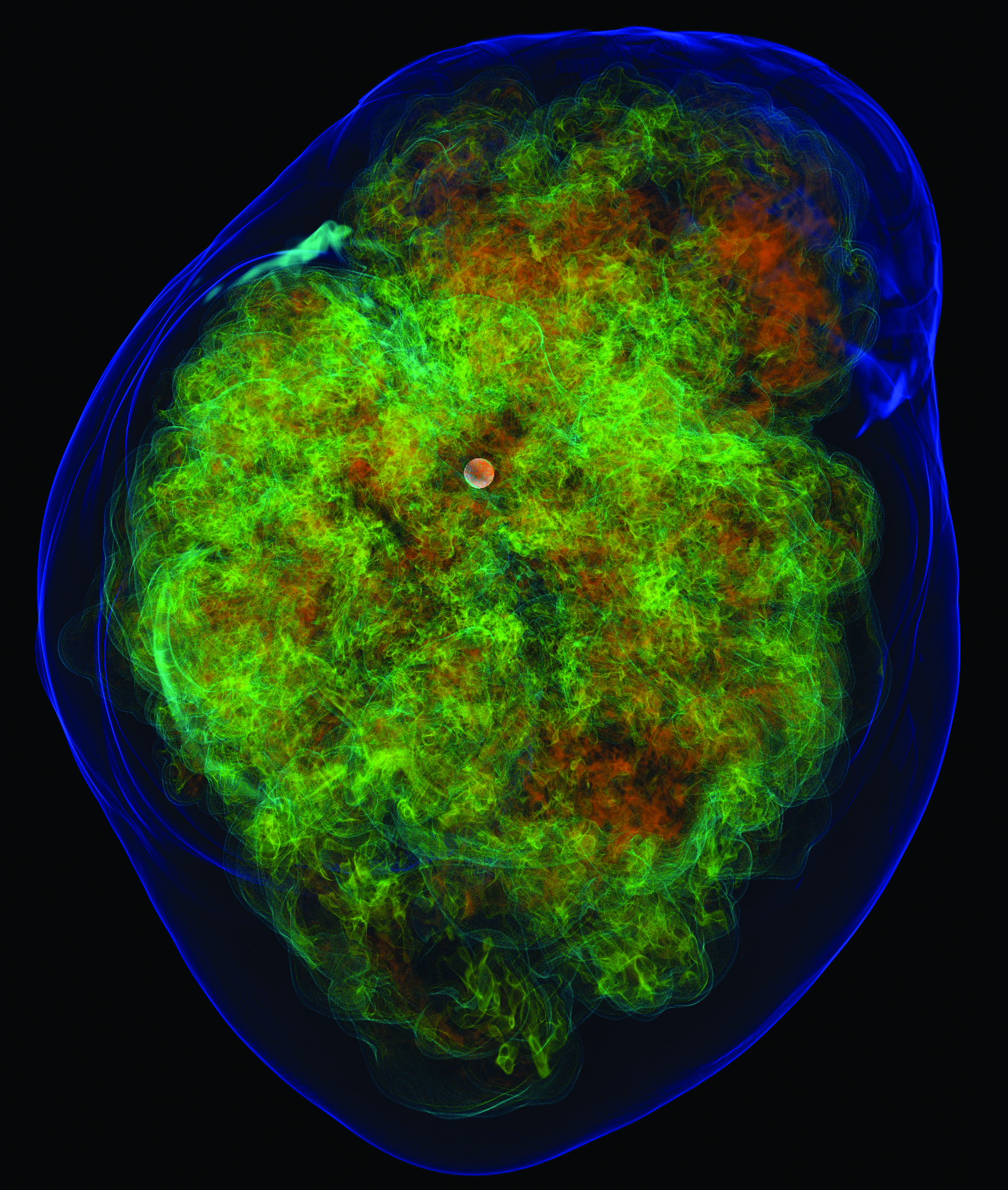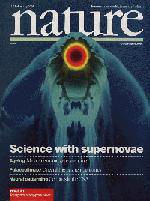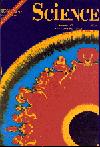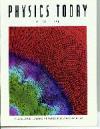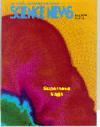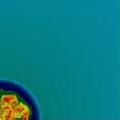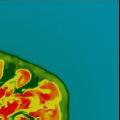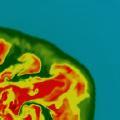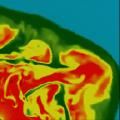|
SciDAC4 TEAMS Supernova and Merger Initiative-
Supernovae are nature's grandest explosions and an astrophysical
laboratory in which unique conditions exist that are not achievable on
Earth. Understanding these explosions and their signals is therefore
important, not only because of their central role in astronomy and
nucleosynthesis, but because a full understanding of supernovae may
lead us to a better understanding of basic physics. Despite decades of
research and modeling, no one understands, in detail, how supernovae
work. The problem persists largely because, until recently, computer
resources have been inadequate to carry out a credible
multi-dimensional calculation. We have established a collaboration
in computational astrophysics devoted both to solving the ``supernova
problem" and to providing sufficient validation checks and community
participation that the results will be accepted. Our team includes
eight major institutions with participation by a half-dozen more, especially the MPA in
Garching, Germany, the DOE/ASCI FLASH Center in Chicago, and the Joint
Institute for Nuclear Astrophysics (JINA). Because the project will be
challenging even on the largest computers possible today, and because
of the difficulties in visualizing and handling large data flows, our
team also includes a large fraction of experts in computer science.
We will investigate both core-collapse and thermonuclear supernovae and
will provide detailed nuclear and spectroscopic diagnostics of all our
models. Predictions of neutrino bursts, gravitational radiation, and
neutron star kicks will be byproducts. Efficient 3D simulation codes,
optimized for massively-parallel computers, will be built, tested, and
validated under this initiative.
|
